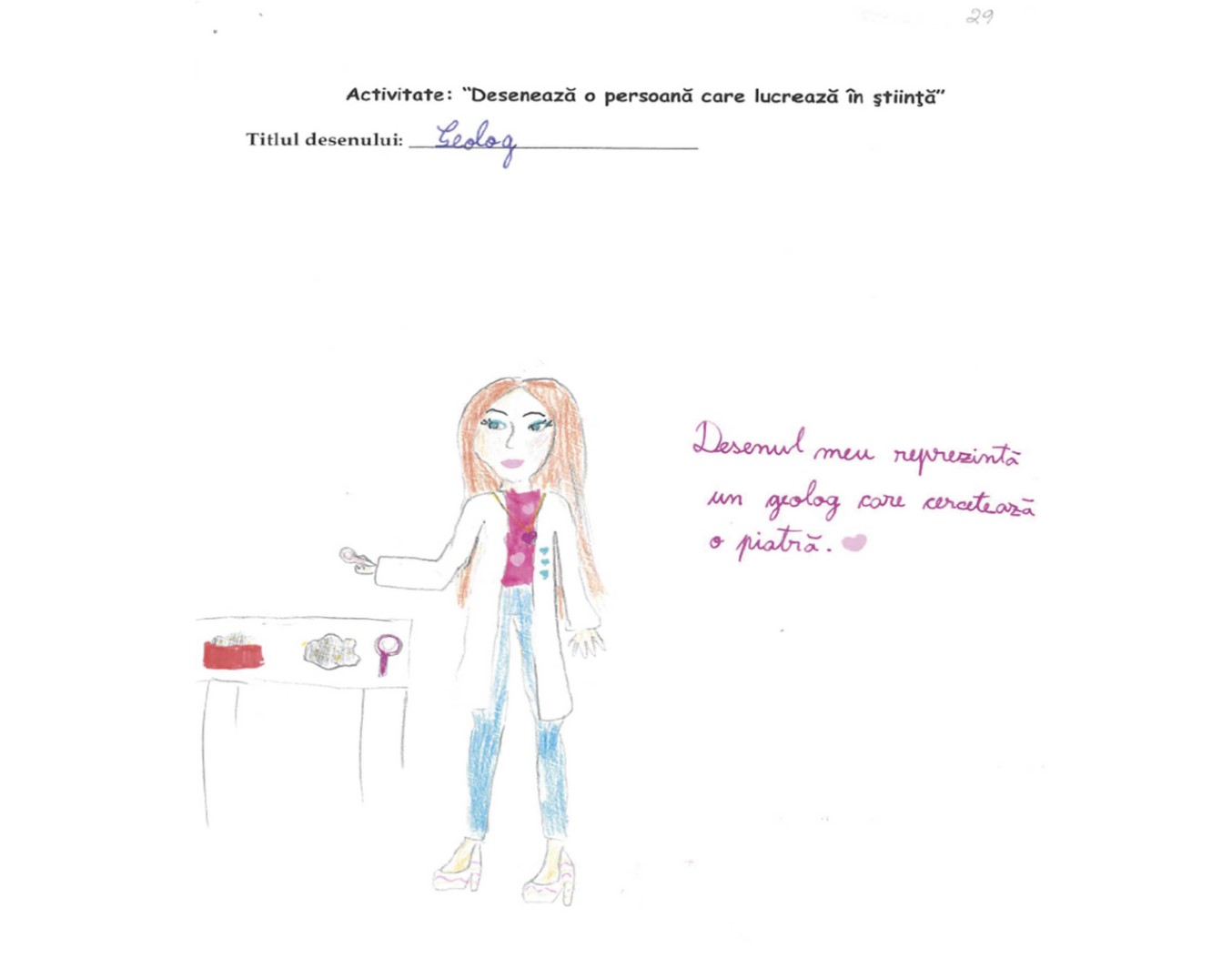On the occasion of the International Day of Women and Girls in Science, I want to share with you a study I recently came across.
There is a simple test to analyse how children perceive researchers: they are asked to draw one. We found one such study conducted on drawings of over 200 children Romania, in grades 3, 4 and 5, urban and rural.
When 210 children, boys and girls, in Romania were asked to draw a "person working in science", most of them drew a man.
- less than a quarter have drawn a woman
- of the girls, less than half drew a woman
- Of the 100 boys, only one drew a woman.
But this drawing is my favourite:

Of course, the test is not about drawings. Studies like this actually indicate how children perceive scientists, perceptions that play a crucial role later on in choosing a career. The head of communications at CERN told me that they use it too, but they believe that the age of the children in this study, 8-11 years old, is one at which children are career-oriented and that interventions at this age are already ineffective. So they start at age six.
The results in Romania are similar to many others internationally, showing us why girls and minorities do not see themselves furthering a career in science to the same extent as boys.
And there was another interesting result from the study, but the authors say that this is not a definitive conclusion, but needs to be investigated further: children who had visited science museums drew significantly more scientists that approximated the stereotypical image (the equivalent of an Einstein doing chemistry experiments). This could be explained by the fact that they probably see scientists from past centuries at science museums, mostly men.
The title of the study is Perceptions of Scientists and Stereotypes through the Eyes of Young School Childrenby Margareta M. Thomson, Zarifa Zakaria (North Carolina State University) and Ramona Radut-Taciu (Babeș Bolyai University) and was published in Education Research International, an open access journal. The images are from the same study.





